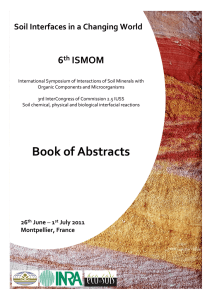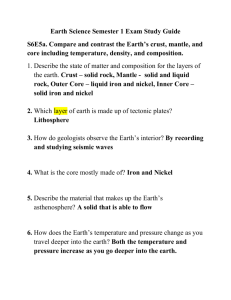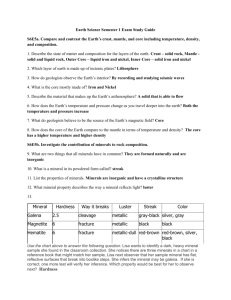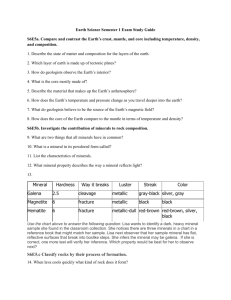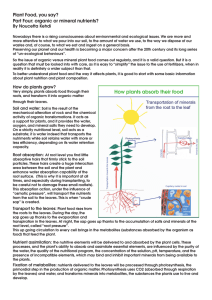EARTH SCIENCES SCIENTIFIC BACKGROUND ASSESSMENT
advertisement
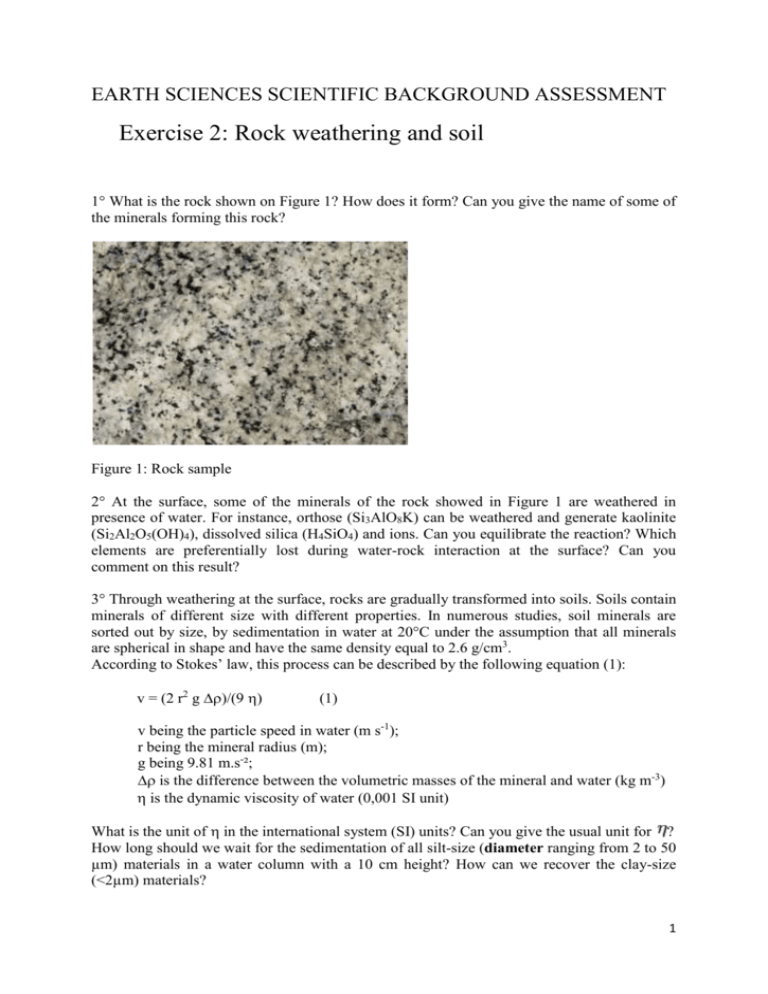
EARTH SCIENCES SCIENTIFIC BACKGROUND ASSESSMENT Exercise 2: Rock weathering and soil 1° What is the rock shown on Figure 1? How does it form? Can you give the name of some of the minerals forming this rock? Figure 1: Rock sample 2° At the surface, some of the minerals of the rock showed in Figure 1 are weathered in presence of water. For instance, orthose (Si3AlO8K) can be weathered and generate kaolinite (Si2Al2O5(OH)4), dissolved silica (H4SiO4) and ions. Can you equilibrate the reaction? Which elements are preferentially lost during water-rock interaction at the surface? Can you comment on this result? 3° Through weathering at the surface, rocks are gradually transformed into soils. Soils contain minerals of different size with different properties. In numerous studies, soil minerals are sorted out by size, by sedimentation in water at 20°C under the assumption that all minerals are spherical in shape and have the same density equal to 2.6 g/cm3. According to Stokes’ law, this process can be described by the following equation (1): v = (2 r2 g )/(9 ) (1) v being the particle speed in water (m s-1); r being the mineral radius (m); g being 9.81 m.s-²; is the difference between the volumetric masses of the mineral and water (kg m-3) is the dynamic viscosity of water (0,001 SI unit) What is the unit of in the international system (SI) units? Can you give the usual unit for ? How long should we wait for the sedimentation of all silt-size (diameter ranging from 2 to 50 µm) materials in a water column with a 10 cm height? How can we recover the clay-size (<2µm) materials? 1 4° In order to speed up the sedimentation process, the suspension can be centrifuged (Figure 2). suspension axis x0 x1 Figure 2: Schematic view of the centrifugation of a mineral suspension In this case, the speed of the particle (dx/dt) will depend on the particle distance from the centrifuge axis (x) which is given by the following equation (2): dx/dt = (2 g2 x r2)/(9 ) (2) with r being the radius of the particle is the difference between the volumetric masses of the mineral and water is the dynamic viscosity of water is the angular speed of the centrifuge (rad.s-1) Using the equation (2), can you determine the time needed (t1) for a particle to move from a distance x0 at t0=0 to a distance x1 in the centrifuge tube? Given that the centrifuge speed is 2500 rpm (round per minute), x0 and x1 are equals to 15 cm and 5 cm respectively, can you determine the time needed to sediment mineral particles with a 0.2 µm diameter? 5° The Stokes’ law is valid for spherical objects. Is this hypothesis correct for soil minerals and especially phyllosilicate minerals? 6° Soil organic carbon is found in all particle-size fractions in a soil. Where is soil organic carbon coming from? 7° Table 1 shows the organic carbon content of different particle-size fractions at the surface and at depth. Describe and explain table 1. Particle-size (µm) >50 µm 2-50 µm <2 µm Organic carbon content (mg/g soil) surface (0-25 cm) depth (45-60 cm) 10 15 40 5 7 10 Table 1: Organic carbon content in sand (>50 µm), silt (2-50 µm) and clay (>2 µm) fractions in a soil sampled at the surface and at depth. 2
